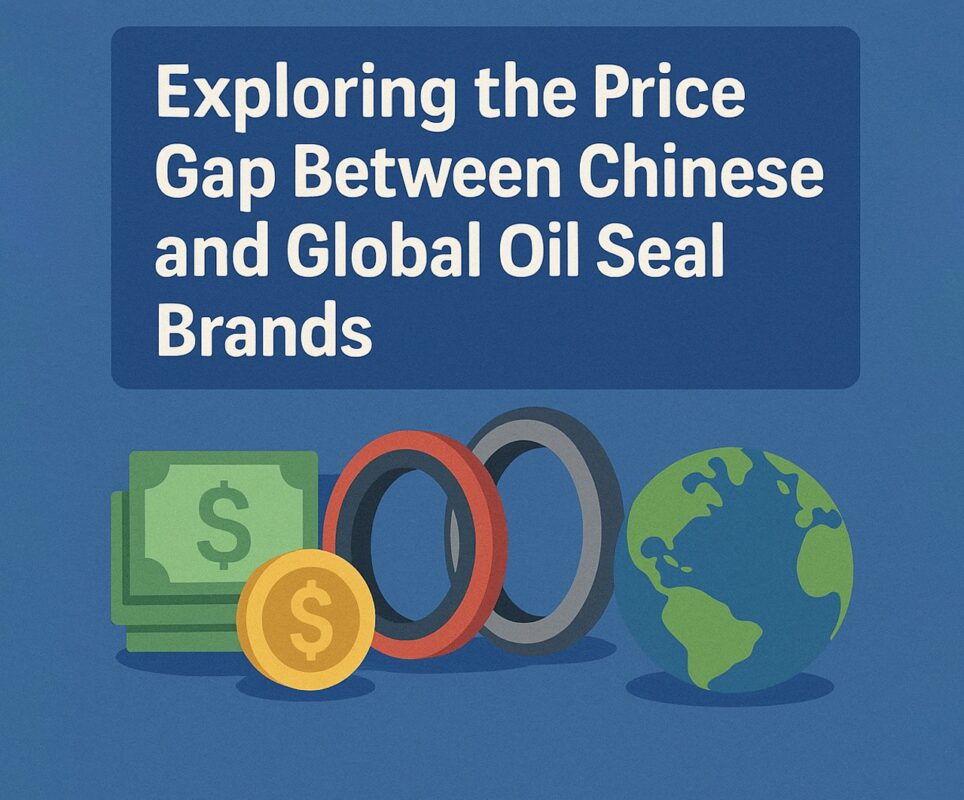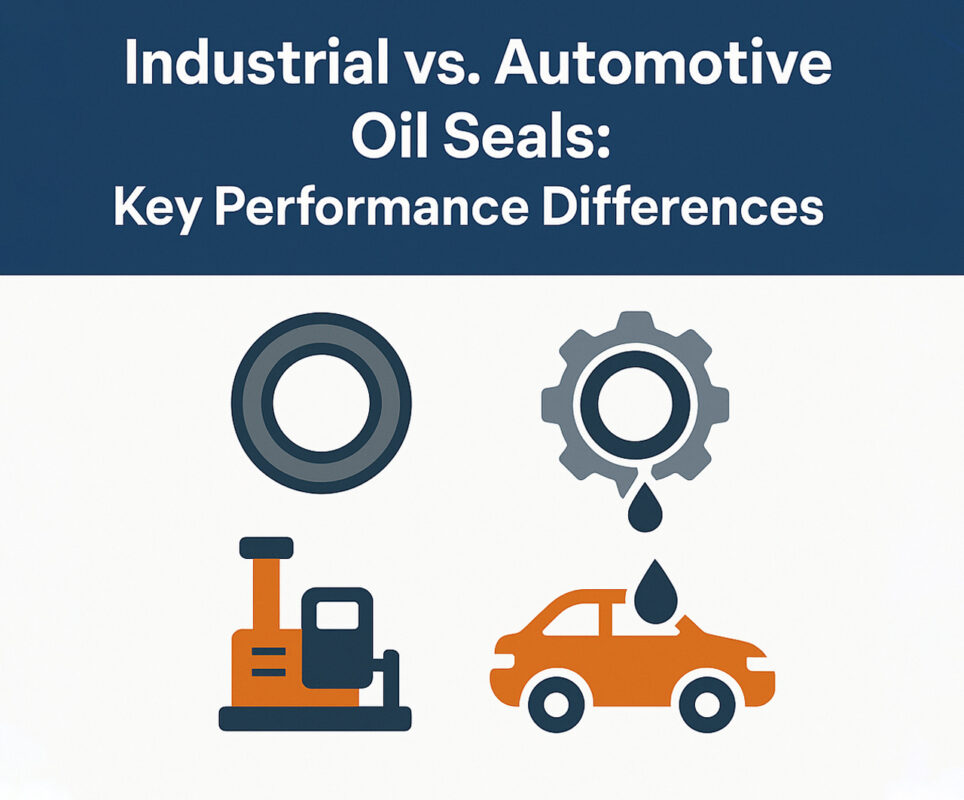When selecting mechanical seals for pumps, compressors, or industrial rotating equipment, choosing the right seal type for the application is critical. Whether you’re sourcing from a trusted mechanical seal company, evaluating a high-durability ceramic mechanical seal, or specifying a mechanical link seal for pipe penetrations, understanding the differences between seal models like 108, 108U, and 109 Seals can ensure operational integrity, longevity, and cost-efficiency.
This guide explores where and how to use each of these seals most effectively, along with practical tips for integration, material selection, maintenance, and emerging trends in sealing technology. All three high-traffic keywords—mechanical seal company, ceramic mechanical seal, and mechanical link seal—play a vital role in the broader sealing landscape. Know more..
What Are 108, 108U, and 109 Seals?
These seals fall under the category of single-spring, unbalanced mechanical seals typically used in general-purpose centrifugal pumps. Their compact design and ease of installation make them favorites in industries ranging from HVAC to wastewater treatment.
- 108 Seal: Standard single-spring, unbalanced seal
- 108U Seal: An upgraded version with improved face design or elastomer compatibility
- 109 Seal: Similar base design but engineered for higher shaft speeds or pressure fluctuations
All three can be produced in multiple materials, including ceramic mechanical seal faces and carbon mating rings.
Choosing Based on Application Environment
1. Clean Water and Light Duty Systems
Recommended Seal: 108
These applications don’t generate extreme temperatures or abrasive conditions. A basic 108 seal from a reputable mechanical seal company is ideal. It offers a cost-effective, low-maintenance solution.
Common uses:
- Irrigation pumps
- HVAC chillers
- Booster pumps
- Water recirculation systems
2. Chemical Processing and Acids
Recommended Seal: 108U or 109 (depending on speed and pH)
Chemical resistance is essential. Opt for ceramic mechanical seal faces and Viton or PTFE elastomers. These materials prevent swelling, cracking, or chemical leaching.
Ideal settings:
- pH-variable systems
- Chlorine injection pumps
- Chemical dosing skids
- Fertilizer distribution systems
3. High-Speed or Vibration-Prone Equipment
Recommended Seal: 109
The 109 seal is engineered to withstand shaft movement and pulsating pressures. Look for versions with tungsten carbide faces and wave springs for added performance.
Key uses:
- Air compressors
- Industrial fans
- High-RPM gear pumps
- Bottling and packaging machinery
4. Abrasive Media or Slurries
Recommended Seal: 108U or 109 with hard faces
For abrasive slurries or particulate-laden fluids, a ceramic mechanical seal face with a silicon carbide counterface reduces wear. Consider seals with external flush ports to extend lifespan.
Application areas:
- Wastewater treatment
- Mining and mineral processing
- Sludge handling systems
- Pulp and paper mills
5. Pipe Penetration and Infrastructure Sealing
Recommended Seal: Not 108/109; use mechanical link seal
Though not part of the 108/109 series, it’s worth noting that a mechanical link seal is ideal for pipe penetrations through walls or tanks. These create a watertight seal using a chain of interlocking rubber links.
Common installations:
- Building wall penetrations
- Underground utility entries
- Concrete tank seals
- Stormwater and wastewater systems
Material Matching for Maximum Efficiency
Each application demands a precise combination of materials. Here’s a quick guide:
| Component | Recommended Material | Why |
| Rotating Face | Ceramic | Hard, corrosion-resistant |
| Stationary Face | Carbon or Silicon Carbide | Self-lubricating and smooth contact |
| Spring | Stainless Steel (316) | Corrosion-resistant and strong |
| Elastomer | Viton, EPDM, or PTFE | Fluid-specific compatibility |
Choosing seals from an experienced mechanical seal company ensures material quality, engineering support, and compliance documentation.
Installation Tips for Long-Term Performance
- Cleanliness Is Critical: Contamination during installation can lead to early failure.
- Lubricate Elastomers Lightly: Use seal-compatible grease or glycerin.
- Avoid Over-Torquing: Excess pressure on the gland can crack ceramic mechanical seal faces.
- Use Alignment Tools: Misalignment increases wear and heat generation.
- Condition the Pump System: Run a soft-start cycle to help seals bed properly.
Installation practices directly affect seal longevity and system uptime.
Maintenance Guidelines
- Inspect for leakage after the first 100 hours of operation.
- Replace seals at signs of vibration, scoring, or dry run events.
- Flush seal chamber during shutdown periods.
- Keep spare 108, 108U, and 109 seals on hand for mission-critical systems.
- Log each seal’s run hours and replacement date for predictive maintenance.
Preventive maintenance extends the life of even the most durable ceramic mechanical seal or mechanical link seal system. Maintaining good records also improves forecasting and inventory control.
OEM Compatibility and Global Standards
Top-tier manufacturers ensure 108, 108U, and 109 seals meet or exceed:
- ANSI and ISO shaft dimensions
- RoHS and REACH compliance
- FDA guidelines (for food and beverage applications)
- DIN and JIS flange compatibilities
Work with a mechanical seal company that can cross-reference OEM part numbers and provide CAD support for accurate integration. Some companies even offer 3D scanning services to reverse engineer existing seal configurations.
Field Troubleshooting Tips
Problem: Seal is leaking prematurely
Fix: Check for improper installation, misalignment, or incompatible elastomers
Problem: Seal face is scoring or glazing
Fix: Confirm proper face materials; consider adding a cooling flush or switching to a ceramic mechanical seal
Problem: Noise or vibration near the seal
Fix: Inspect for shaft wobble, cavitation, or incorrect spring tension
Problem: Failure at wall pipe penetration
Fix: Use a correctly sized mechanical link seal with proper compression
Emerging Trends in Seal Technology
- Smart Seals: Sensors embedded into ceramic mechanical seal housings for real-time monitoring of temperature, pressure, and face wear.
- Eco-Friendly Elastomers: Development of halogen-free, biodegradable rubber compounds.
- 3D-Printed Seal Prototypes: On-demand development of customized geometries for specialty equipment.
- Hybrid Mechanical-Link Systems: Combining the benefits of pressure seals and mechanical link seal technology for multi-pipe penetrations.
- Digital Twin Integration: Predictive lifecycle modeling for seals using machine data analytics.
These innovations are reshaping how seals are selected, monitored, and maintained—especially in high-precision or environmentally sensitive industries.
Cost Considerations and ROI
The upfront cost of a ceramic mechanical seal or upgraded 109 seal may be higher than a standard 108 model. However, the return on investment comes in the form of:
- Reduced unplanned downtime
- Extended seal life
- Fewer process disruptions
- Lower energy costs due to tighter sealing
Working with a trusted mechanical seal company gives you access to lifecycle cost comparisons and TCO (Total Cost of Ownership) calculators that guide your procurement process.
Final Thoughts
Whether you’re maintaining a municipal water plant, managing an industrial production line, or specifying pipe sealing solutions for a large infrastructure project, selecting the right seal can make or break your operation. Models like 108, 108U, and 109 offer proven performance when paired with the correct materials and applied in the right conditions.
Partner with a reliable mechanical seal company that understands your application environment and offers proven, efficient options like ceramic mechanical seal assemblies and rugged, installation-friendly mechanical link seal systems.
Know your application. Understand the variables. And seal every opportunity for performance, longevity, and safety into your equipment investment.






